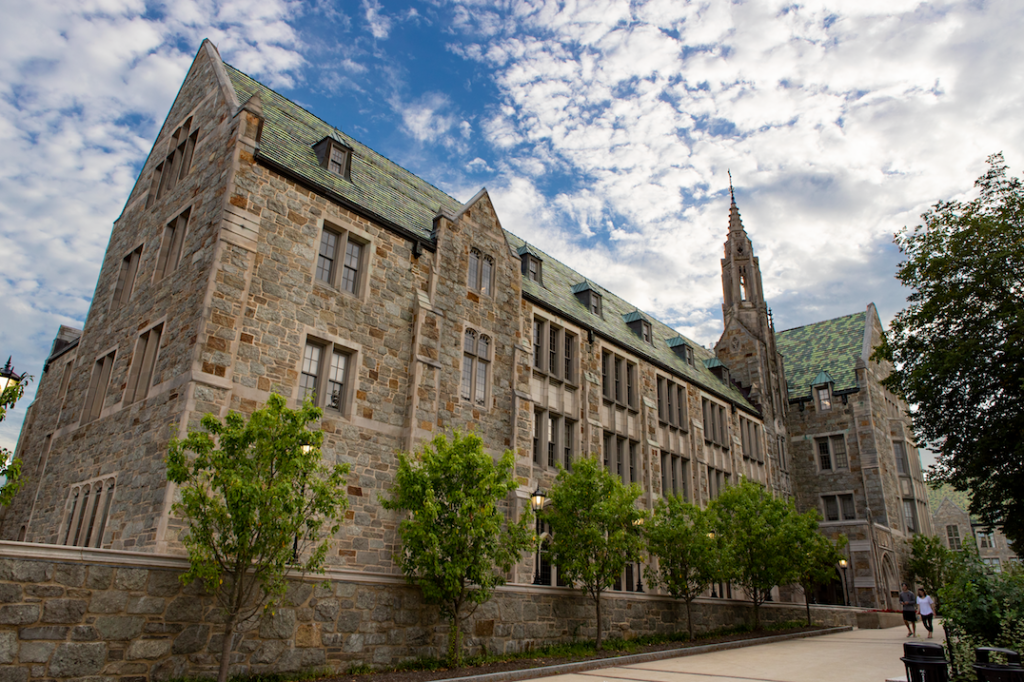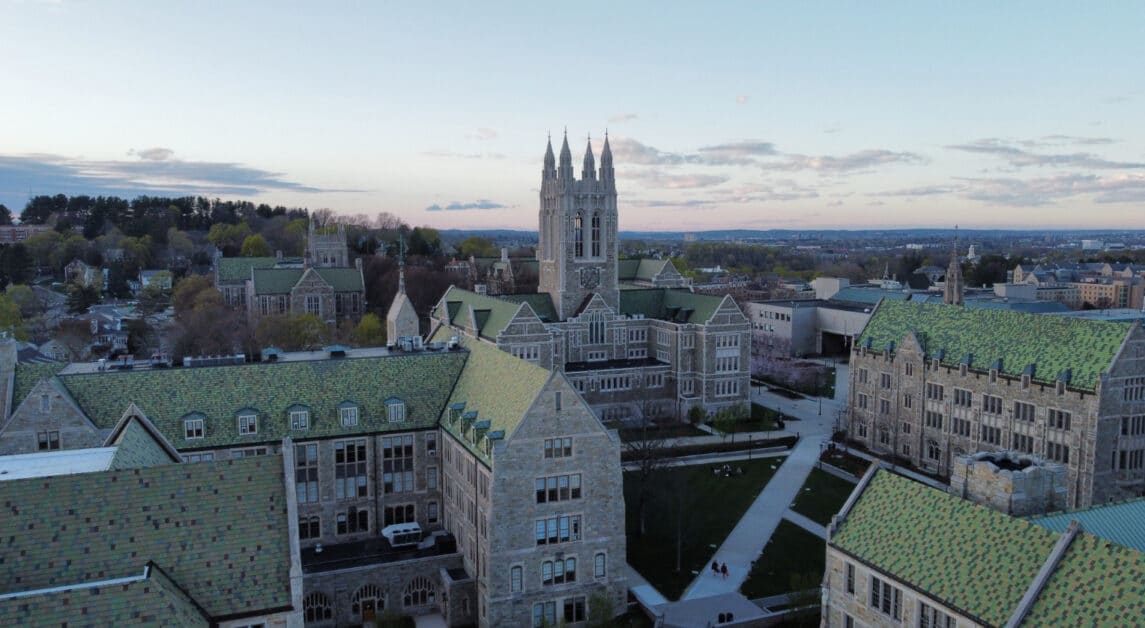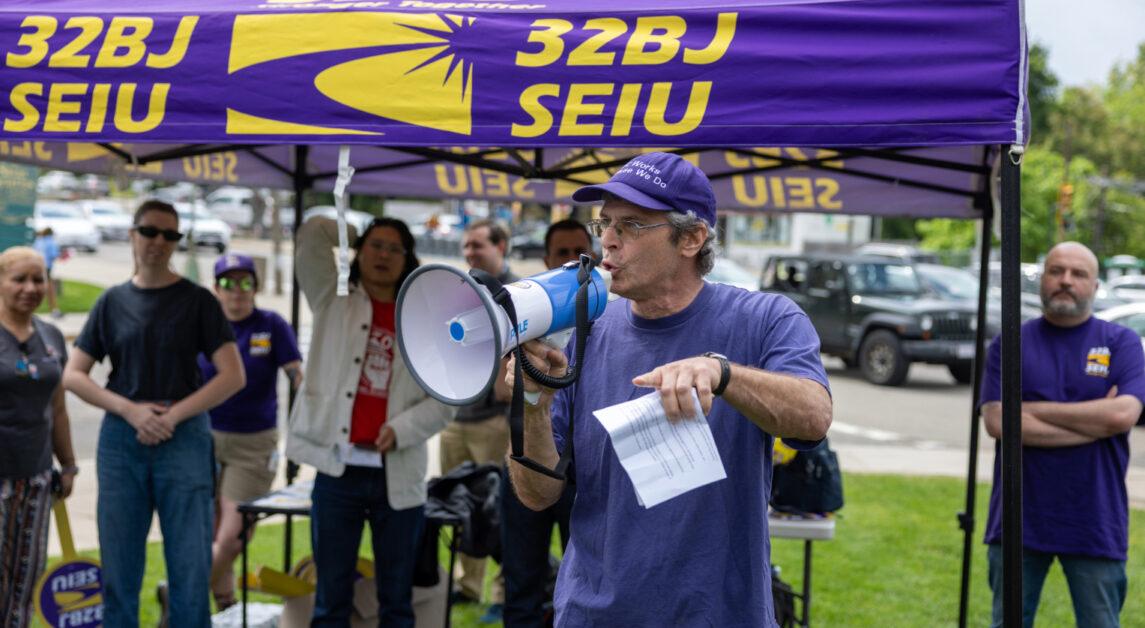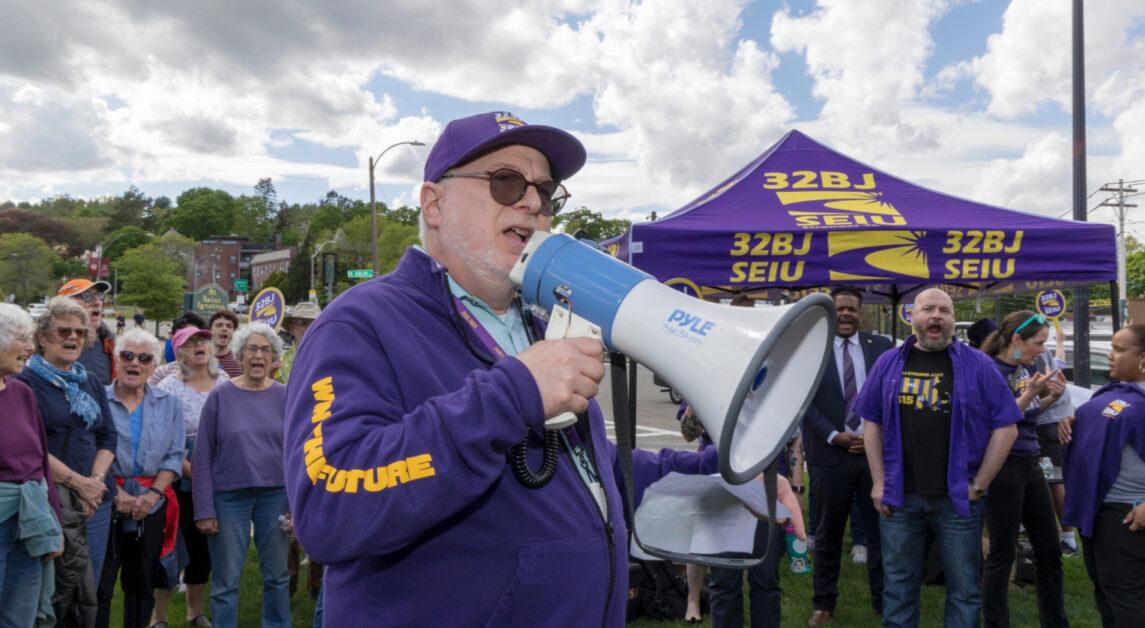Brittny Saunders, deputy commissioner for Strategic Initiatives at the New York City Human Rights Commission, spoke at Boston College on Thursday about the commission’s enforcement of the city’s human rights laws and projects for raising public awareness about individual rights. Saunders was invited to BC as part of the Senior Fellows in Residence program hosted by the Rappaport Center for Law and Public Policy.
The New York City Human Rights Commission is responsible for overseeing the enforcement of the city’s various anti-discrimination laws, which protect residents against bias based on religion, gender, race, sexual orientation, age, and other aspects of identity. Saunders emphasized the breadth of these laws, citing the existence of protections against discrimination on the basis of criminal history, credit history, and source of legal income.
The commission also works with local communities to organize events and, in recent years, has assisted the City Council in passing new laws to expand the protection of rights.
“The commission wasn’t very active until 2015,” Saunders said. “Not everyone knows who we are or what we do. It is a constant challenge for us to figure out how we can just make folks aware of our existence … the work that we’re doing, and the fact that they have a number of protections under the city’s human rights laws.”
To help increase public awareness, the commission promotes art pieces related to human rights. It recently partnered with artist Tatyana Fazlalizadeh to create postcards with prompts that encourage reflection on individual experiences of race- and gender-based harassment. During Fazlalizadeh’s 18 months of working with the commission, she also gave talks at community events across different boroughs of the city.
Defending the rights of immigrants is another key focus of the commission, which recently released a document detailing legal protections that residents have against discrimination based on immigration status.
“It is unlawful under the city’s human rights law to do things like harassing patrons in a restaurant because of their accents, refusing repairs on a unit that’s occupied by an immigrant family, or threatening to call ICE on someone if they complain about the conditions of their unit,” said Saunders.
The commission’s campaign on protecting migrants is not limited by the city’s geographical boundaries. Joined by over a dozen human rights agencies in various major cities in the United States, the commision made a video and a written statement calling out the inhumane conditions at the U.S.-Mexico border detention centers.
“We were feeling … a lot of frustration around the fact that … our jurisdiction does not expand beyond the five boroughs of New York City,” Saunders said. “But by the same token, we are a human rights agency in this country at this moment, so what is it that we should be doing? … Where we landed was to put together a video with several other human rights agencies from across the country.”
Saunders discussed how the commission keeps up with ongoing issues and responds to them through public campaigns. Addressing the buildup anti-Muslim sentiment in the wake of the last presidential election, the commission launched a social media campaign called “I am Muslim, I am NYC” in late 2015. A more recent media campaign named “While Black” addressed the discrimination that black New Yorkers face while going about their day-to-day activities.
Looking to the future, Saunders talked about the commission’s aim to propel human rights education in schools.
“We’re developing plans around how we can work more closely with the Department of Education to have something that’s closer to a ‘human rights for youth’ curriculum—that we could deploy with some more regularity and a little bit more scope in the city schools,” she said.
Featured Image by Jonathon Ye / Heights Editor







